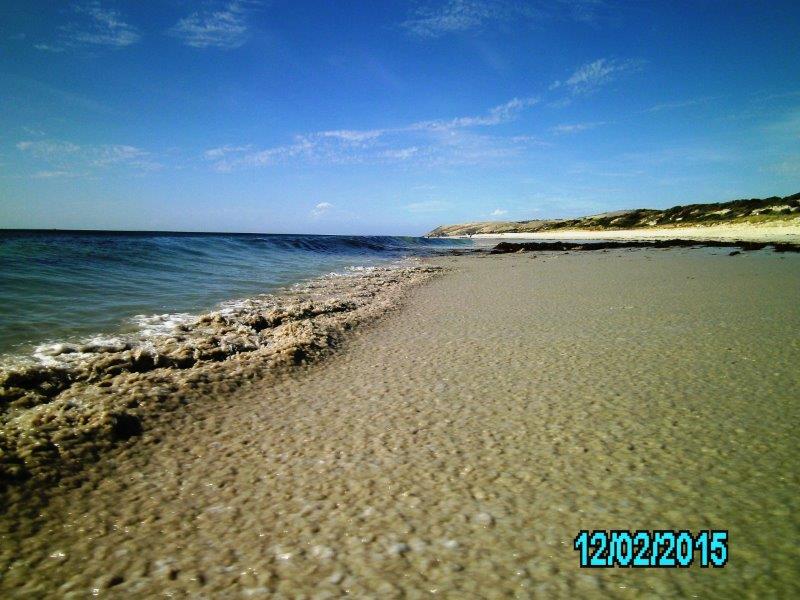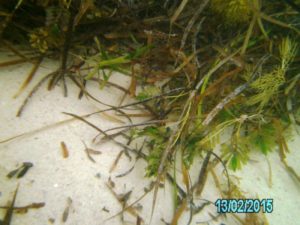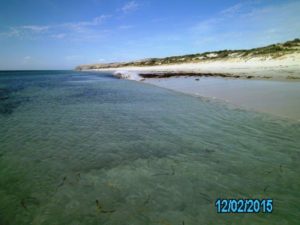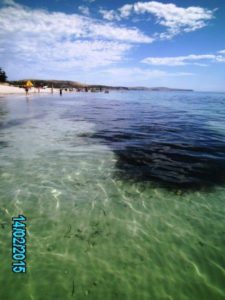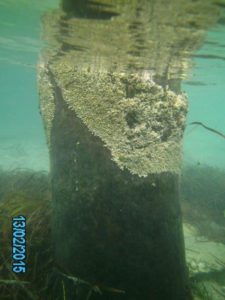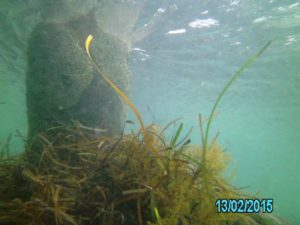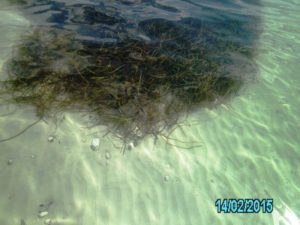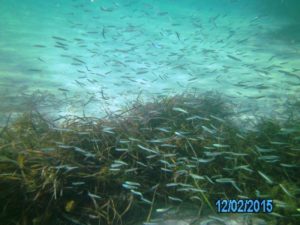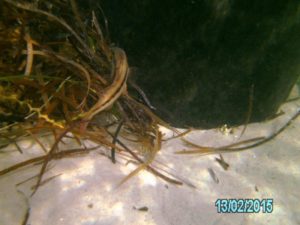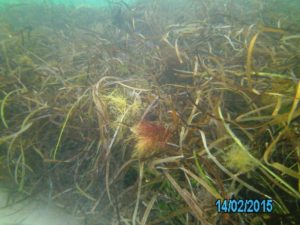Encounters of the kind below are not what most of us expect when at the beach for a swim and a bit of relaxation on a nice summer day.
Which adds a special touch, for me at least.
You can wade bare-footed at knee to waist depth off almost any white sandy beach in Gulf St Vincent and Spencer Gulf and see several species of pipefish that specialize in hiding in and around the edges of those dark patches of seagrass detritus that are such a common feature of this intertidal and shallow sub-tidal habitat .
With very sharp eyes in very calm clear shallows you may be lucky enough, even without a facemask, to discern a few live pipefish, quite near your feet but never so much as touching a toe, among the other 99.99% of almost identical looking bits of genuinely dead plant matter (most of which are indeed those same strands of detached seagrass leaves that wash ashore to
form lines along the intertidal and upper tidal limit of a beach (or “beachcombing” section of any beach) and, seasonally after gales and big tides, form big heaps on the beach.
Pop on a mask, and the subtle differences between the pipefish and the 99.9% of bits of dead seagrass that really are dead seagrass resting on the sand or gently moving with the tide and wavelets becomes apparent.
Seeing is believing.
The two you’ll usually see are the only 2 members of the Histiogamphelus genus: the Crested Pipefish and Rhino Pipefish, both endemic to Southern Australia.
Have a look one day soon… for a cheap thrill in the most unlikely of places!
Below are some photos that I was able to take in the shallows from 12th to 14th February 2015 (the latter was the most idyllic day of three successive days): –
There were at least two pipefish in this shot
Pipefish do push the limits intertidally
The shallowest limit for Normanville’s pipefish
An outermost piling of Normanville jetty
Normanville jetty can hide many pipefish when the tide is right
I found a Briggs Crested Pipefish here
Schools of silverlings often obscured my view
It seems quite likely that goatfish would eat pipefish
A dense detrital island in the shallows
Everything in this shot could be a pipefish!

